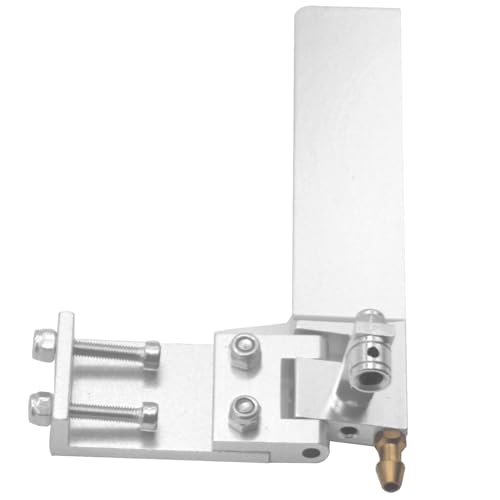I think that Glenn and I use a similar approch to making the wire drive. The wire drive is not difficult to make, it just a little different. For the initial setup, I make a drawing of the drive on a 1 to 1 scale, with a straight line representing the bottom of the hull. Mark the strut position and the engine drive collet position on the drawing. I then take a peice of wire that is longer than the actual length of the driveline so that I can hold it without interferring with the actual arc of the wire. Next, I bend the wire in an arc using my hands on each end of the wire so that it aligns with the collet and the strut in the position it would be in as it enters both peices. I place this over the drawing and have someone draw a line along the wires natural arc. This is the curve that I use to set up the driveline in the boat. This is very important in reducing the amount of drag and heat of the flexing of the wire as it spins. Depending on the setup, the engine usually sits at about a 5 to 7 degree angle in the boat.
A bushing placed in the center of the length of the wire helps reduce the harmonics of the wire drive.
I also use ball bearings in the strut. One of the things that I do a little different is take a peice of brass tubing about 1/8 inch long and solder it on the very front end of the prop shaft. I then drill and tap a 4-40 srew hole just behind the front bearings in the strut and put a VERY short screw in it. This prevents the prop shaft from coming out of the strut if the wire breaks.
I am running the wire drive in my 21 and 45 riggers with no problems.
I am not trying to butt-in, just trying to add to Glenns post.
Charles



































